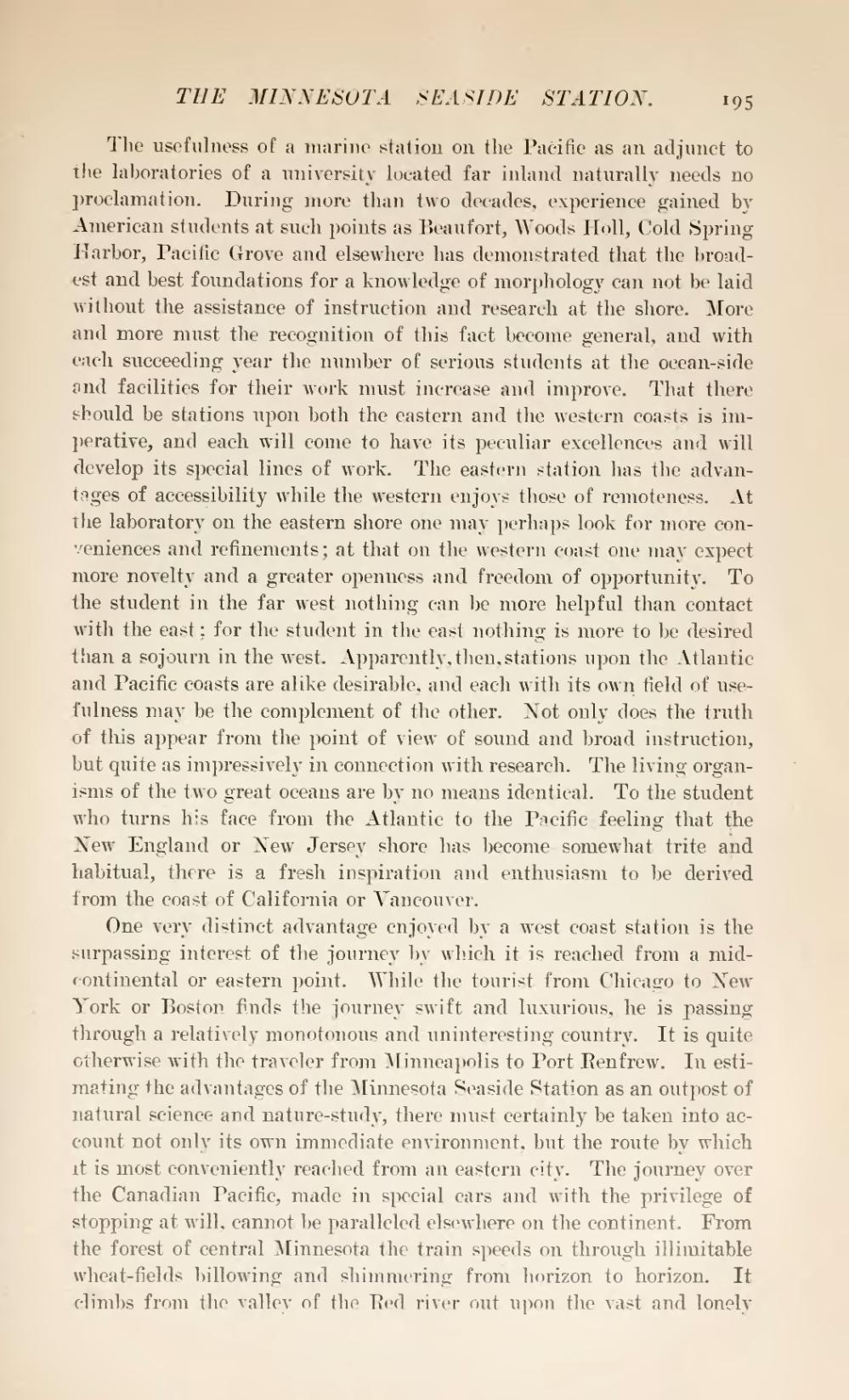The usefulness of a marine station on the Pacific as an adjunct to the laboratories of a university located far inland naturally needs no proclamation. During more than two decades, experience gained by American students at such points as Beaufort, Woods Holl, Cold Spring Harbor, Pacific Grove and elsewhere has demonstrated that the broadest and best foundations for a knowledge of morphology can not be laid without the assistance of instruction and research at the shore. More and more must the recognition of this fact become general, and with each succeeding year the number of serious students at the ocean-side and facilities for their work must increase and improve. That there should be stations upon both the eastern and the western coasts is imperative, and each will come to have its peculiar excellences and will develop its special lines of work. The eastern station has the advantages of accessibility while the western enjoys those of remoteness. At the laboratory on the eastern shore one may perhaps look for more conveniences and refinements; at that on the western coast one may expect more novelty and a greater openness and freedom of opportunity. To the student in the far west nothing can be more helpful than contact with the east; for the student in the east nothing is more to be desired than a sojourn in the west. Apparently, then, stations upon the Atlantic and Pacific coasts are alike desirable, and each with its own field of usefulness may be the complement of the other. Not only does the truth of this appear from the point of view of sound and broad instruction, but quite as impressively in connection with research. The living organisms of the two great oceans are by no means identical. To the student who turns his face from the Atlantic to the Pacific feeling that the New England or New Jersey shore has become somewhat trite and habitual, there is a fresh inspiration and enthusiasm to be derived from the coast of California or Vancouver.
One very distinct advantage enjoyed by a west coast station is the surpassing interest of the journey by which it is reached from a mid-continental or eastern point. While the tourist from Chicago to New York or Boston finds the journey swift and luxurious, he is passing through a relatively monotonous and uninteresting country. It is quite otherwise with the traveler from Minneapolis to Port Renfrew. In estimating the advantages of the Minnesota Seaside Station as an outpost of natural science and nature-study, there must certainly be taken into account not only its own immediate environment, but the route by which it is most conveniently reached from an eastern city. The journey over the Canadian Pacific, made in special cars and with the privilege of stopping at will, cannot be paralleled elsewhere on the continent. From the forest of central Minnesota the train speeds on through illimitable wheat-fields billowing and shimmering from horizon to horizon. It climbs from the valley of the Eel river out upon the vast and lonely
